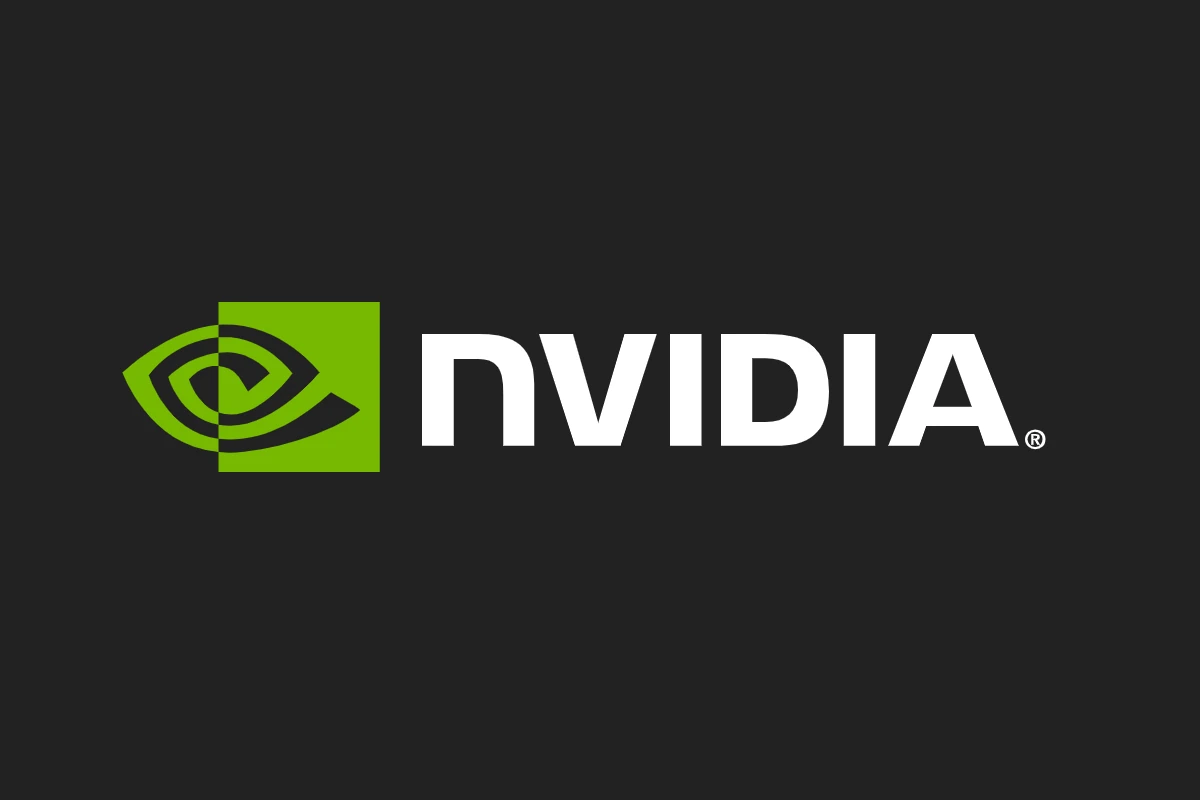Encountering the “unable to connect to NVIDIA” error during a driver update can be frustrating for users who rely on their graphics cards for optimal performance. This issue may arise due to several reasons, such as outdated software, interrupted connections, or corrupted files. To resolve this, users often find success by downloading the new Nvidia app Beta or visiting the official GeForce website for the latest driver update.
Basic troubleshooting steps include rebooting the system or erasing specific files like NSManagedTasks.xml, which might obstruct the connection. Advanced users can explore options like reinstalling older drivers through the device manager or manually updating drivers using official sources. Addressing these errors can significantly enhance your device’s performance and stability.
For those who encounter stubborn issues, seeking help from online forums or Nvidia’s support might provide further solutions. These approaches not only fix the current problem but also help maintain an up-to-date and efficient system.
Common Causes of the “Unable to Connect to Nvidia Driver Update” Error
Before diving into fixes, it’s helpful to understand what might be causing the problem. Here are some of the most common reasons users encounter this error:
- Internet Connectivity Issues: A weak or unstable internet connection can prevent the Nvidia update utility from connecting to its servers.
- Outdated GeForce Experience Software: Older versions of GeForce Experience may struggle to communicate with Nvidia’s update servers.
- Corrupted Nvidia Services: If key Nvidia services aren’t running properly, the update utility won’t work as expected.
- Firewall or Antivirus Interference: Security software can mistakenly block Nvidia’s connection to its update servers.
- Server-Side Problems: Occasionally, Nvidia’s servers are temporarily down or under maintenance.
Understanding these causes can make troubleshooting faster and easier.
Step-by-Step Solutions to Fix the Issue
1. Check Your Internet Connection
Start with the basics. Ensure your internet connection is stable:
- Restart your modem/router.
- Try loading a few web pages or streaming a video to confirm you have internet access.
- If you’re using Wi-Fi, consider switching to a wired connection during updates for better reliability.
2. Restart Nvidia Services
Sometimes, Nvidia’s background services stop functioning properly. Restarting them often solves connection issues.
How to restart Nvidia services:
- Press
Win + R, typeservices.msc, and hit Enter. - In the Services window, locate the following services:
- Nvidia Display Container LS
- Nvidia LocalSystem Container
- Nvidia NetworkService Container
- Right-click each service and select Restart.
- After restarting the services, relaunch GeForce Experience and check for updates again.
3. Update or Reinstall GeForce Experience
If you’re using an outdated or corrupted version of GeForce Experience, reinstalling it might fix the issue.
How to update/reinstall GeForce Experience:
- Go to Control Panel > Programs and Features.
- Find Nvidia GeForce Experience, right-click, and select Uninstall.
- Visit the official Nvidia GeForce Experience download page and download the latest version.
- Install the app and log in again.
After reinstalling, try checking for driver updates.
4. Temporarily Disable Firewall and Antivirus
Security software can sometimes block GeForce Experience from accessing Nvidia’s servers. To test if this is the problem:
- Temporarily disable your firewall and antivirus software.
- Open GeForce Experience and check for updates.
- If the update connects successfully, add GeForce Experience as an exception in your security software settings.
⚠️ Note: Remember to re-enable your firewall and antivirus after testing.
5. Manually Download Nvidia Drivers
If GeForce Experience still doesn’t connect, you can manually download and install the latest drivers.
How to manually install Nvidia drivers:
- Visit the Nvidia Driver Download page.
- Select your graphics card type and operating system.
- Click Search, then Download the latest driver.
- Run the installer and follow the prompts.
This method bypasses GeForce Experience entirely and ensures you have the most recent driver.
6. Check Nvidia Server Status
Although rare, Nvidia’s servers may be down for maintenance. You can check their status via:
- Social media platforms like Twitter
- Downdetector reports
- Nvidia forums or their official website
If the servers are down, you may need to wait and try again later.
Advanced Troubleshooting Tips
If none of the basic fixes work, try these more advanced options:
Clean Install Nvidia Drivers
Use the Custom Installation option during driver setup and select Perform a Clean Installation. This wipes previous driver files and installs fresh ones.
Use Display Driver Uninstaller (DDU)
- Download DDU from a trusted source.
- Run it in Safe Mode to completely remove all Nvidia drivers and related files.
- Reboot your PC and reinstall the latest drivers from Nvidia’s website.
How to Prevent This Issue in the Future
Here are some tips to avoid running into this problem again:
- Keep GeForce Experience updated.
- Regularly check for Windows updates, as system patches can improve hardware compatibility.
- Ensure your firewall and antivirus settings allow Nvidia applications to communicate freely.
- Schedule routine driver checks to avoid falling behind on updates.
Final Thoughts
The “Unable to Connect to Nvidia Driver Update” error can be frustrating, but it’s usually fixable with a few straightforward steps. Whether it’s restarting services, reinstalling GeForce Experience, or manually downloading drivers, one of these solutions should get you back on track. If the problem persists, Nvidia’s forums and support team can offer more personalized assistance.
Key Takeaways
- Update the Nvidia app for connection issues.
- Reboot or erase certain files to fix errors.
- Consider manual driver installation for persistent problems.
Understanding Nvidia Driver Updates
Nvidia drivers are essential for graphics card performance, enabling smooth gaming and graphics-intensive tasks. Connection issues can stem from various sources, affecting update processes and overall system performance.
The Role of Nvidia Drivers
Nvidia drivers are software components that facilitate communication between the operating system and Nvidia graphics cards. They are crucial for rendering images and graphics-intensive computations. Without these drivers, the graphics card cannot perform its functions effectively.
Regular updates to these drivers improve performance and add support for new games and applications. They often include bug fixes, security patches, and enhancements. Keeping drivers up-to-date ensures the system can handle new features and improvements in graphics technology.
Common Causes for Connection Issues
Connection problems with Nvidia driver updates typically arise due to network or software-related issues. One common cause is firewalls or antivirus software blocking the Nvidia server connection. Ensuring these programs allow Nvidia connections can resolve the issue.
Another common cause is using outdated system software, like Windows, which can lead to compatibility issues. Updating the operating system and all relevant software components ensures smooth communication between the system and Nvidia’s servers.
Misconfigurations in network settings and router problems can also cause disruptions, preventing the download or installation of updates. Checking connection stability and router settings can help diagnose and fix these issues.
Initial Troubleshooting Steps
When facing the “unable to connect to NVIDIA driver update” issue, it’s crucial to verify fundamental aspects first. Ensuring a stable internet connection and checking NVIDIA’s service status are top priorities.
Verifying Internet Connection
A stable internet connection is essential for downloading NVIDIA drivers. First, ensure that the device is connected to the internet. Users can perform a quick check by visiting websites or using network troubleshooting tools available in operating systems like Windows or macOS.
If there are connectivity issues, resetting the router or modem often helps. Another method is to run Windows Network Diagnostics by right-clicking the network icon on the taskbar and selecting “Troubleshoot problems.” This can identify and fix common network issues.
In some cases, updating network drivers improves connection stability. Users can do this through the Device Manager by right-clicking on the network adapter and selecting “Update driver.” Ensuring the internet connection is robust before attempting further steps reduces complications during the driver update process.
Checking Nvidia Service Status
NVIDIA’s services must be running smoothly for successful driver updates. First, users should check the NVIDIA website or social media channels for any service announcements. If NVIDIA’s servers are down, it’s advisable to wait until they are operational again.
On the local device, ensure that NVIDIA services are working properly. Open Task Manager by pressing Ctrl + Shift + Esc. Under the “Services” tab, check for NVIDIA services, and make sure they are running. If needed, right-click and select “Restart.”
Finally, ensure all NVIDIA software is up to date by opening GeForce Experience. Check for updates within the application, as outdated software might hinder connectivity to NVIDIA’s servers. Keeping these services running correctly helps in smooth driver updates.
Advanced Troubleshooting Techniques
When facing the “unable to connect to NVIDIA driver update” issue, certain advanced methods can help resolve the problem. One effective approach involves temporarily disabling security software. Another is ensuring the driver installer runs with administrator privileges.
Disabling Antivirus and Firewall Temporarily
Antivirus software and firewalls may mistakenly block the NVIDIA driver update process. Disabling these security features can help identify if they are interfering. Before disabling, it is crucial to save all important data to avoid potential risks.
To disable, locate the antivirus icon in the system tray. Right-click the icon, then select the option to disable it temporarily. For firewalls, access the Windows Security settings. Navigate to Firewall & network protection, then turn off the firewall for the network in use.
Once disabled, try updating the NVIDIA drivers. If the update succeeds, configure the security software to allow NVIDIA services. Remember to re-enable antivirus and firewall after testing to maintain system security.
Running the Driver Installer as Administrator
Running the driver installer with administrator privileges can resolve permission issues preventing updates. To begin, download the latest NVIDIA driver from the official website. Ensure the file matches the system’s specifications.
Once downloaded, locate the installer file, usually in the Downloads folder. Right-click the file, and select “Run as administrator”. This grants necessary permissions for a smooth installation process.
Accept any prompts that appear, allowing the installation to proceed. Follow the on-screen instructions carefully to complete the installation. Running as an administrator minimizes the risk of interruptions caused by insufficient permissions.
Manual Driver Installation
Installing NVIDIA drivers manually can offer more control over the update process, ensuring compatibility and resolving errors. This involves downloading drivers directly from NVIDIA’s website and using safe mode for a cleaner installation.
Downloading Drivers from the Nvidia Website
To start, visit the NVIDIA Driver Downloads page. Here, enter your graphics card details, which can be found in your system’s device manager. Once the correct driver is identified, download it to your computer.
Make sure to save the file in a location where it is easy to find, like your desktop. It can be helpful to check for any specific instructions or release notes provided with the driver.
Installing Drivers in Safe Mode
Safe Mode is a special way to start your computer with minimal drivers. To boot into Safe Mode, restart the computer and press F8 (or another designated key based on your system) before Windows loads.
Choose Safe Mode from the list of options. Once in Safe Mode, navigate to the downloaded driver file. Double-click to start the installation process. This mode ensures that no other software interferes during the installation.
Follow the prompts to complete the driver installation, and reboot the computer normally once finished. This method helps prevent potential conflicts and ensures a smoother installation experience.
Resolving Specific Error Messages
Encountering error messages like “Nvidia Installer Cannot Continue” or “Nvidia Network Service Unavailable” can be frustrating. This section provides practical steps to help troubleshoot and resolve these specific issues.
Addressing ‘Nvidia Installer Cannot Continue’
When users see the message “Nvidia Installer Cannot Continue,” it typically indicates issues with existing drivers or conflicting software. To resolve this, it is essential to ensure that any previous Nvidia drivers are completely uninstalled. This can be done using specialized software to remove all related files and registry entries.
After ensuring the system is free from old driver remnants, it’s advisable to download the latest driver directly from the Nvidia website. Restarting the computer in Safe Mode can also help, as it loads only the essential drivers needed to operate. Sometimes, disabling antivirus programs temporarily during installation may prevent conflicts.
Fixing ‘Nvidia Network Service Unavailable’
The error “Nvidia Network Service Unavailable” usually suggests an issue with background network services. To address this, begin by restarting the NVIDIA Network Service. Access Windows Services (type services.msc in the Run dialog), locate the service, and restart it.
If the problem persists, check if the NSManagedTasks.xml file (located in the Nvidia directory) is corrupt. Deleting this file and restarting the service can resolve related issues. Another step is to ensure the system’s network drivers are up-to-date, as outdated drivers might interfere with Nvidia’s network services.
Frequently Asked Questions
Addressing connectivity issues with NVIDIA drivers can significantly enhance the user experience on both Windows 10 and 11. Solutions often involve managing tasks, understanding errors, and ensuring up-to-date installations.
What steps can be taken to resolve connectivity issues with the NVIDIA GeForce Experience?
Resolving connectivity issues can often be achieved by restarting the computer and GeForce Experience. Checking internet connection stability and ensuring the program is up-to-date can also help. Closing background NVIDIA tasks using Task Manager might also fix the issue.
Why am I encountering problems when trying to update my NVIDIA drivers on Windows 10?
Problems with updating NVIDIA drivers on Windows 10 often arise from conflicts with existing driver versions. Installing an older version through Device Manager could sometimes be necessary. Ensuring that no other applications are interfering with the process is also important.
What causes the ‘unable to connect to NVIDIA’ error on Windows 11 during driver updates?
The “unable to connect to NVIDIA” error on Windows 11 is usually linked to network connectivity issues or driver conflicts. Ensuring the internet connection is stable and that the system has the latest Windows updates can mitigate some problems.
How can I fix the issue where GeForce Experience fails to connect to NVIDIA servers?
When GeForce Experience fails to connect, checking network stability and restarting the application can be useful first steps. Updating the app itself or reinstalling it can also resolve server connectivity issues.
Why might the NVIDIA driver update process fail, and how can it be troubleshooted?
Driver update failures may be due to software conflicts, connectivity issues, or incorrect configurations. Troubleshooting can involve clean installation methods and ensuring no background processes disrupt the update. A system reboot can also be effective.
What should I do if I repeatedly receive an error when attempting to connect to NVIDIA for driver updates?
Repeated errors during updates might require uninstalling the current driver version completely, then performing a fresh installation. Disabling non-essential background programs can also help avoid interference during the update process.







